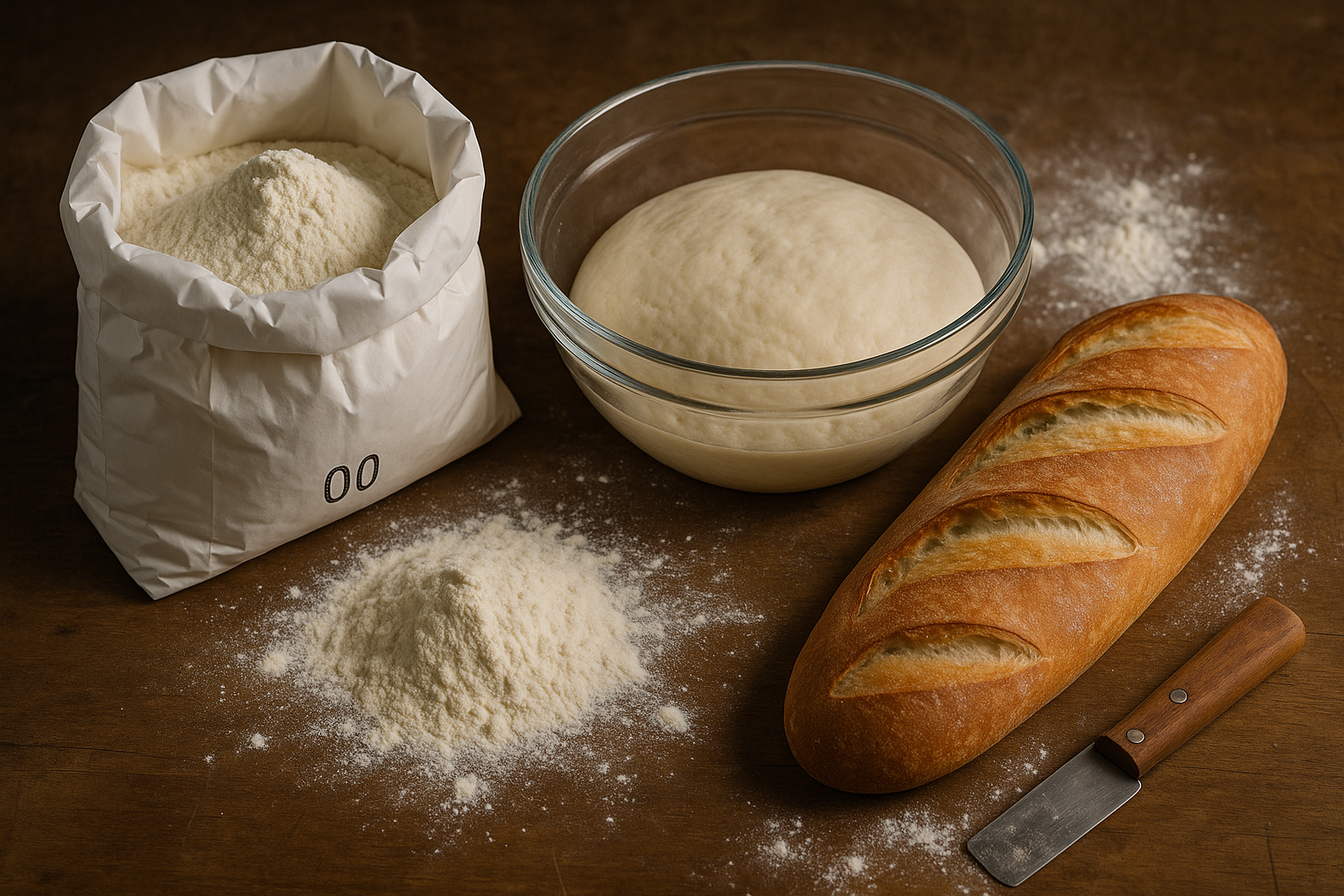By using our website, you agree to the use of cookies as described in our Cookie Policy
The Techniques Behind Perfectly Baked Italian Bread
Flour Choices Shape Every Loaf
Good Italian bread starts with the right flour. “00” grade isn’t just a label—it’s what gives the bread its signature snap and soft crumb. This flour feels fine, blends smoothly, and creates a dough that’s easy to work with. Bakers don’t guess or settle for all-purpose. They measure, mix, and adjust until the dough feels just right. The result is bread that holds up to olive oil, soup, or a simple swipe of butter.

Ignore the flour, and the bread falls flat. The wrong blend leads to dense, heavy loaves. The right one lifts the dough, lets it breathe, and gives every bite that unmistakable Italian character. This isn’t about following a recipe. It’s about knowing what works, feeling the dough, and trusting experience over shortcuts.
Fermentation Sets the Flavor
Great Italian bread never comes from a rushed kitchen. The dough needs time. Real time. Cold fermentation isn’t a fancy trick. It’s the backbone of every loaf that tastes like it came from a bakery in Rome or Naples. Bakers mix the dough, then let it rest in the cool for a full day, sometimes two. The flavors deepen. The gluten relaxes. The dough transforms from sticky and rough to smooth and elastic. Hydration levels climb, sometimes up to 80%. That’s how you get those wild, open holes in ciabatta and focaccia. The bread feels alive, not manufactured.
Temperature control isn’t optional. Let the dough sit too warm, and it blows out. Flat, lifeless, bland. Keep it cool, between 45 and 50 degrees, and the enzymes do their work. The result is bread with a tang, a chew, and a depth you can’t fake. Every stage matters:
- Autolyse: At least 30 minutes. The flour soaks up water, starts to relax. The dough changes under your hands.
- Bulk fermentation: Two to four hours at room temperature. The dough rises, bubbles form, the smell shifts from flour to bread.
- Cold proof: Twelve to twenty-four hours. The flavors build. The structure sets.
- Final proof: One to two hours. The dough springs back when pressed, ready for the oven.
- Steam: The first fifteen minutes in the oven. The crust blisters, the loaf expands, the kitchen fills with the smell of real bread.
Skip a step, and the bread tells on you. The crumb tightens. The crust dulls. Bakers watch the dough, not the clock. They know when it’s ready by touch, smell, and sight. That’s the difference between bread that disappears in minutes and bread that sits untouched.
Every Region Leaves Its Mark
Italian bread isn’t one thing. Walk through Tuscany and you’ll find pane toscano. No salt, just flour, water, and yeast. The flavor is clean, the crumb open, the crust thick. Head south to Puglia, and the bread changes. Pane di Altamura uses semolina, giving it a yellow hue and a nutty bite. Each region guards its traditions. At our bakery in Lake Worth, we know the importance of respecting these differences. We don’t force one style on every loaf. Instead, we adapt, using local water, adjusting for humidity, but never losing sight of what makes each bread unique.
Real Italian bread doesn’t hide behind toppings or fillings. The flavor stands on its own. The crust crackles. The crumb pulls apart in your hands. Every bite tells you where it came from. Bakers who care about tradition don’t cut corners. They honor the old ways, even when the process takes longer and demands more attention.
What Sets Authentic Italian Bread Apart
Not every loaf that calls itself Italian earns the name. Authentic bread shows its quality in every detail. The crust isn’t just brown. It’s blistered, crisp, and full of flavor. The inside isn’t just soft. It’s open, moist, and full of irregular holes. The flavor lingers, with a hint of tang from the long fermentation. This bread holds up to olive oil, stands out on a table, and never needs to be disguised. At Mamma Mia's Trattoria, we use the right flour, give the dough time, and respect the traditions that built Italy’s bread culture.
- Crust: Thin, crisp, and full of character
- Crumb: Open, moist, never gummy
- Flavor: Deep, slightly tangy, never bland
- Appearance: Golden, rustic, inviting
Every step, from flour selection to final bake, leaves its mark. The difference shows up in the first bite. And in the last crumb left on the plate.
Experience Authentic Italian Bread
Ready for bread that delivers on every promise? Call us at 561-963-9565 or make a reservation to try our authentic Italian bread, fresh from the brick oven daily.
‹ Back






